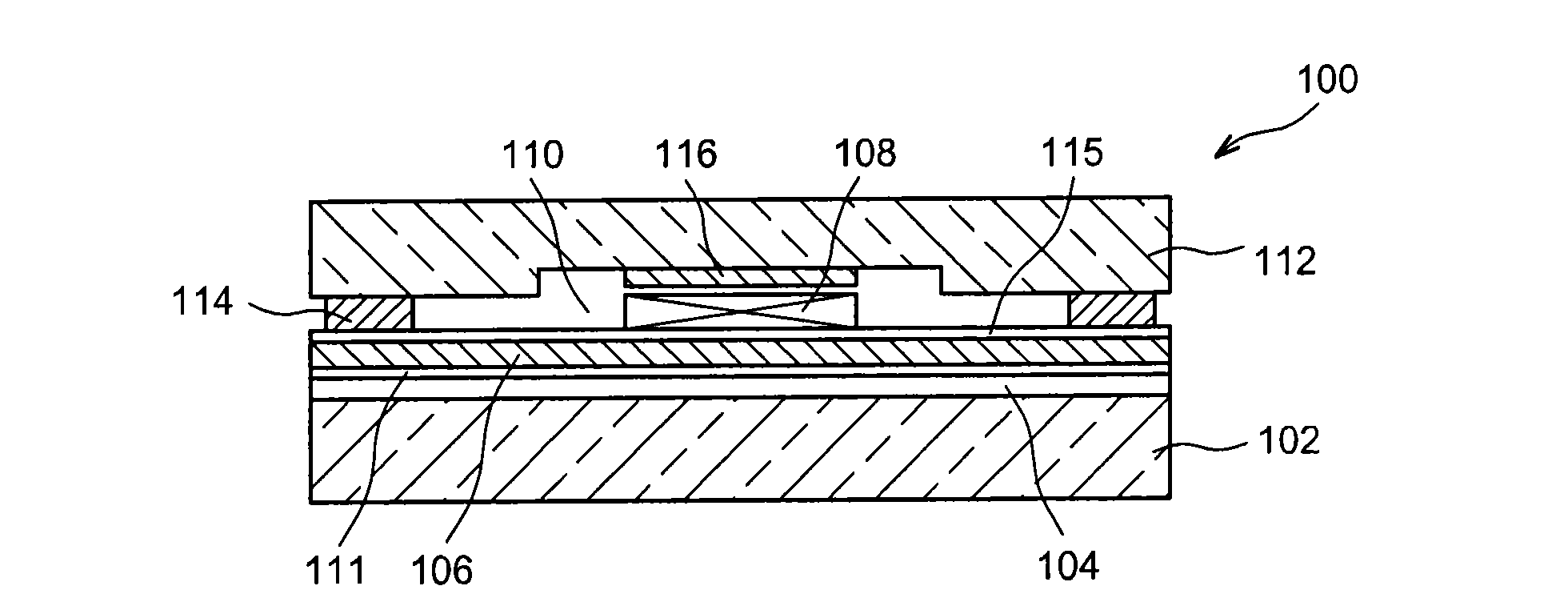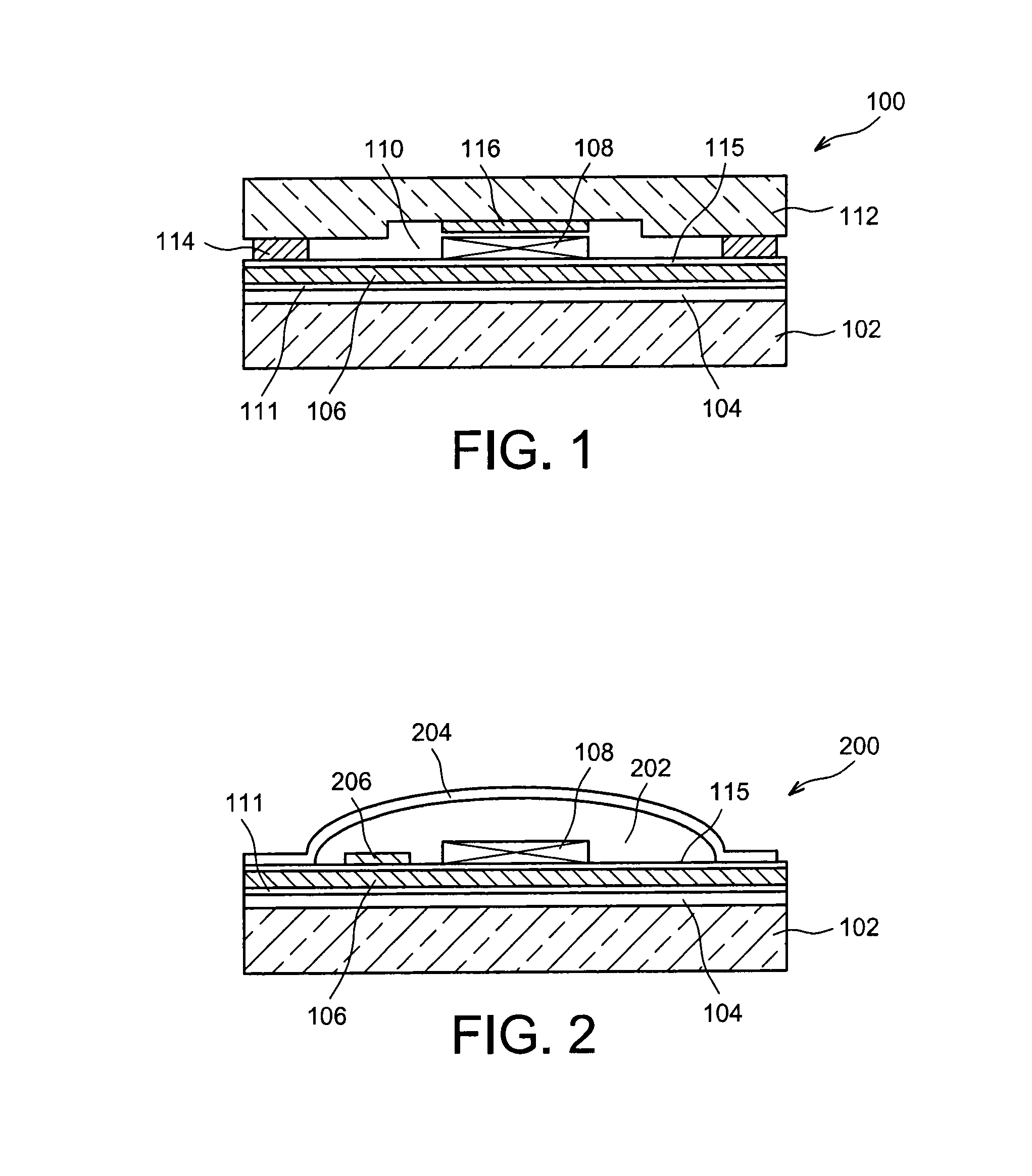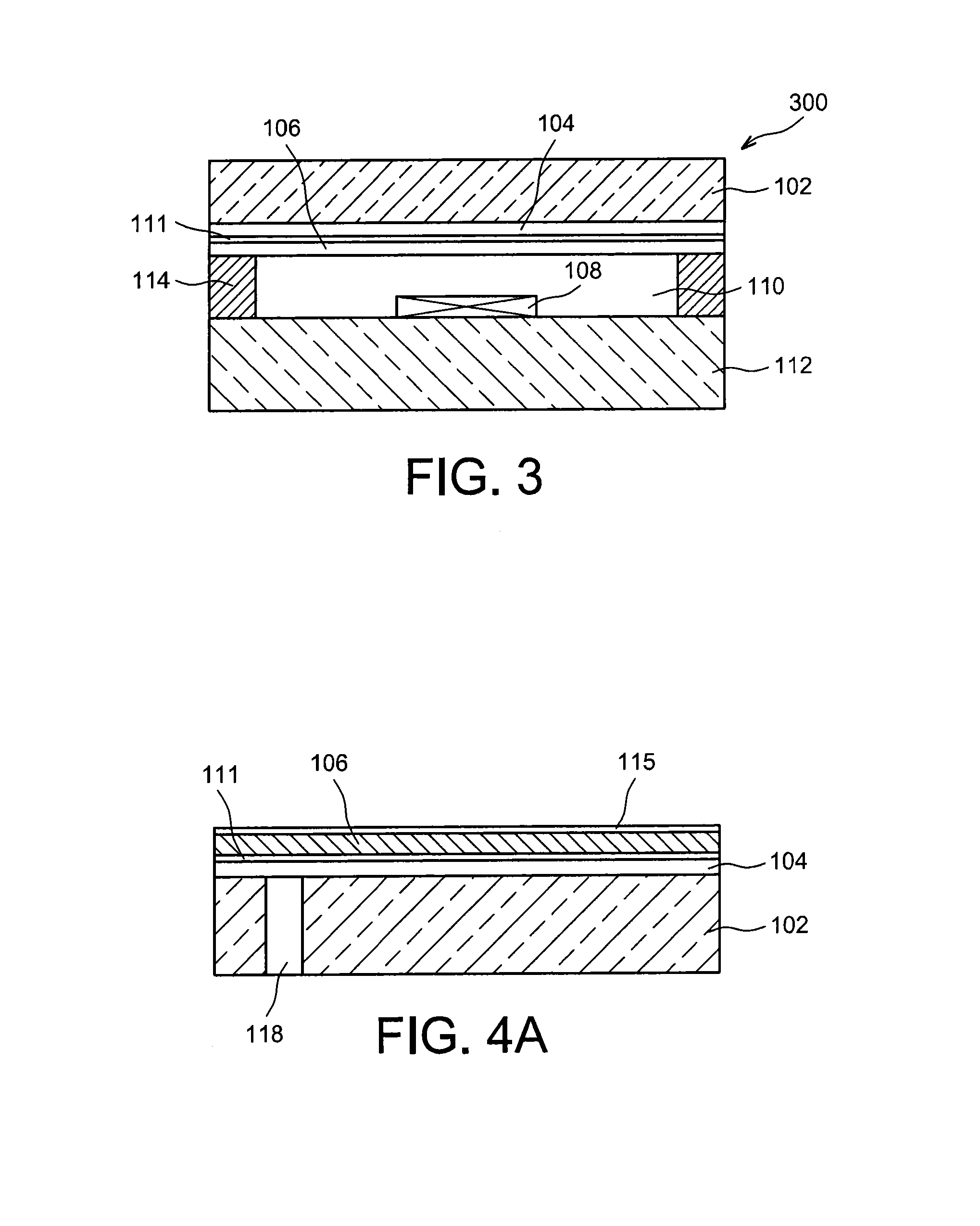Structure for hermetic encapsulation of a device and an electronic component
a technology of electronic components and structures, applied in the field of encapsulation structures, can solve the problems of device(s) not being able to operate properly, the pressure and nature of the atmosphere in the cavity cannot be controlled, and the device(s) cannot operate properly
- Summary
- Abstract
- Description
- Claims
- Application Information
AI Technical Summary
Benefits of technology
Problems solved by technology
Method used
Image
Examples
first embodiment
[0074]Reference is made to FIG. 1, which shows an encapsulation structure 100 according to a
[0075]The structure 100 comprises a first substrate 102 on which an integrated circuit 104 is produced, shown diagrammatically in FIG. 1 in the form of an active layer arranged on the first substrate 102. The integrated circuit 104 comprises in particular MOS-type devices such as CMOS transistors. The integrated circuit 104 is covered with a dielectric layer 111 covering in particular electrical contact pads of the integrated circuit 104 and enabling the integrated circuit 104 to be electrically insulating from the elements of the structure 100 intended to be produced on the integrated circuit 104.
[0076]The integrated circuit 104 and the dielectric layer 111 are covered with a getter material layer 106, comprising at least one getter material capable of performing gas absorption and / or adsorption, advantageously titanium, or zirconium, or an alloy comprising titanium and zirconium. The getter...
second embodiment
[0088]FIG. 2 shows an encapsulation structure 200 according to a
[0089]Like the encapsulation structure 100 described above, the encapsulation structure 200 comprises the first substrate 102, the integrated circuit 104 covered with the dielectric layer 111, the getter material layer 106 covering the dielectric layer 111, as well as the device 108. As above, a dielectric layer 115 may cover the getter material layer 106 so as to electrically insulate the device 108 from the getter material layer 106.
[0090]Unlike the encapsulation structure 100 comprising a cap formed by the second substrate 112 secured to the first substrate 102, the encapsulation structure 200 comprises a cavity 202 in which the device 108 and the integrated circuit 104 are encapsulated, and formed between the first substrate 102 and one or more thin films 204 produced by a TFP-type process (including in particular the production of a sacrificial material portion enabling the deposition of the layers intended to form...
third embodiment
[0093]Reference is made to FIG. 3, which shows an encapsulation structure 300 according to a
[0094]Like the encapsulation structure 100, the encapsulation structure 300 comprises the cavity 110 formed between the first substrate 102 and the second substrate 112 and in which the device 108 and at least one part of the integrated circuit 104 are encapsulated. However, in this third embodiment, the integrated circuit 104 is produced on the first substrate 102, which forms the cap of the cavity 110. The device 108 is therefore produced not on the integrated circuit 104, but directly on and / or in the second substrate 112. As in the previous embodiments, the integrated circuit 104 is covered by the getter material layer 106 making it possible to absorb and / or adsorb the gases released by the materials of the integrated circuit 104 during the thermal activation of the getter material present in the encapsulation structure 300. While not shown, it is possible for one or more getter material ...
PUM
| Property | Measurement | Unit |
|---|---|---|
| thickness | aaaaa | aaaaa |
| diameter | aaaaa | aaaaa |
| diameter | aaaaa | aaaaa |
Abstract
Description
Claims
Application Information
 Login to View More
Login to View More - R&D
- Intellectual Property
- Life Sciences
- Materials
- Tech Scout
- Unparalleled Data Quality
- Higher Quality Content
- 60% Fewer Hallucinations
Browse by: Latest US Patents, China's latest patents, Technical Efficacy Thesaurus, Application Domain, Technology Topic, Popular Technical Reports.
© 2025 PatSnap. All rights reserved.Legal|Privacy policy|Modern Slavery Act Transparency Statement|Sitemap|About US| Contact US: help@patsnap.com



